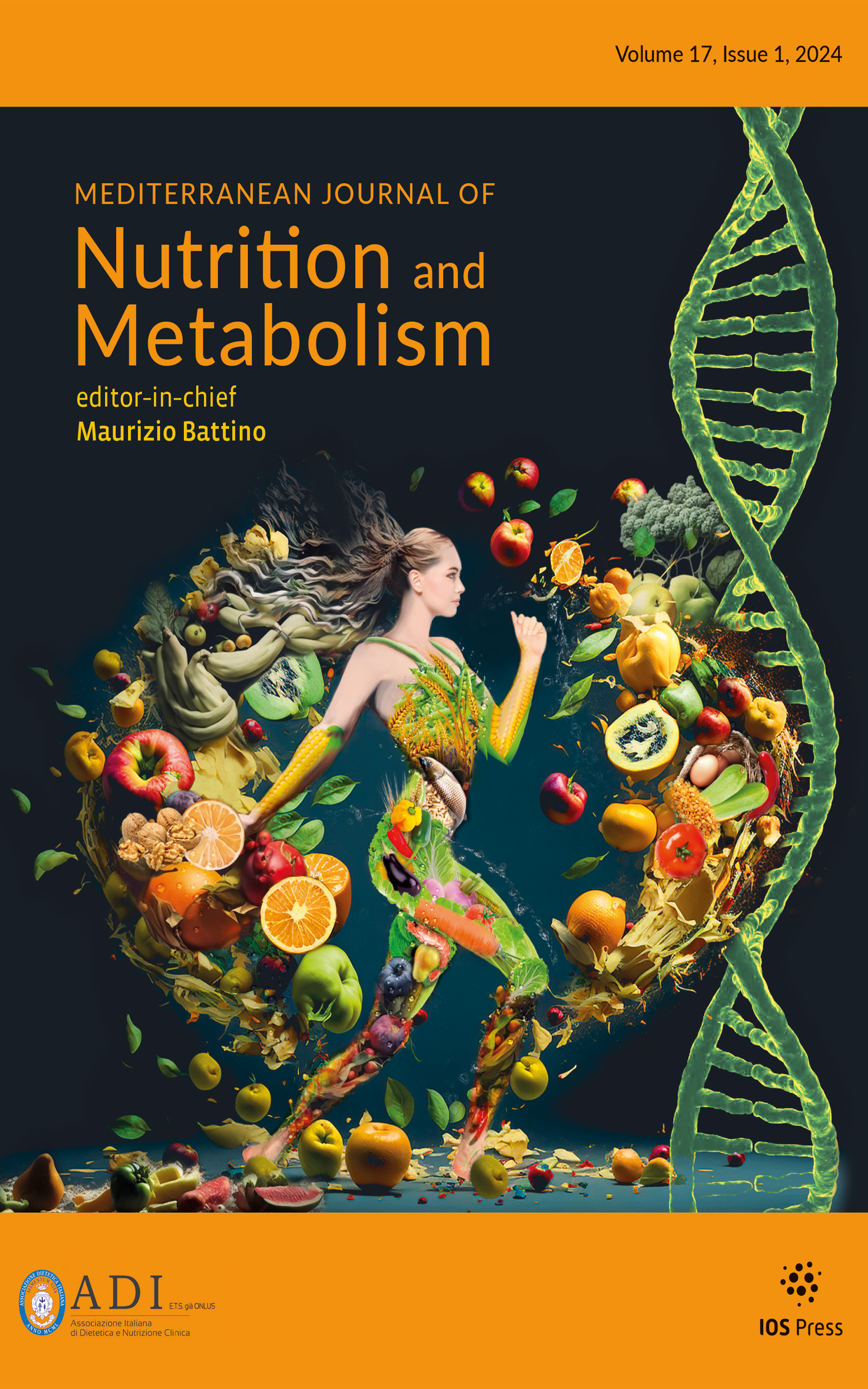Authors: Sukkar, S. G. | Signori, A. | Borrini, C. | Barisione, G. | Ivaldi, C. | Romeo, C. | Gradaschi, R. | Machello, N. | Nanetti, E. | Vaccaro, A. L.
Article Type:
Research Article
Abstract:
Anecdotal data in the last few years suggest that protein-sparing modified diet (PSMF) delivered by naso-gastric tube enteral (with continuous feeding) could attain an significant weight loss and control of appetite oral feeding, but no phase II studies on safety and efficacy have been done up to now. To verify the safety and efficacy of a protein-sparing modified fast administered by naso-gastric tube (ProMoFasT) for 10 days followed by 20 days of a low-calorie diet, in patients with morbid obesity (appetite control, fat free mass maintenance, pulmonary function tests and metabolic pattern, side effects), 26 patients with a BMI ≥30
…kg/m2 have been selected. The patients had to follow a protein-sparing fast by enteral nutrition (ProMoFasT) for 24 h/day, for 10 days followed by 20 days of low-calorie diet (LCD). The endpoint was represented by body weight, BMI, abdominal circumference, Haber's appetite test, body composition by body impedance assessment (BIA), handgrip strength test, metabolic pattern, pulmonary function test. Safety was assessed by evaluation of complications and side effects of PSMF and/or enteral nutrition. In this report the results on safety and efficacy are described after 10 and 30 days of treatment. After the recruiting phase, a total of 22 patients out of 26 enrolled [14 (63.6 %) females] were evaluated in this study. Globally almost all clinical parameters changed significantly during first 10 days. Total body weight significantly decreased after 10 days (Δ−6.1 ± 2; p < 0.001) and this decrease is maintained in the following 20 days of LCD (Δ = −5.88 ± 1.79; p < 0.001). Also the abdominal circumference significantly decreased after 10 days [median (range): −4.5 (−30 to 0); p < 0.001] maintained then in the following 20 days of LCD [median (range) = −7 (−23.5 to −2); p < 0.001]. All BIA parameters significantly changed after 10 and 30 days from baseline. All parameters except BF had a significant change after 10 days of treatment while the difference at 30 days was lower than at 10 days for TBW, FFM and MM with no significant differences from baseline for the last two characteristics. For VAS appetite the difference was significant after 10 days and the decrease in appetite was maintained at 30 days with no significant difference (p = 0.83) between 10 and 30 days. No significant differences in the first 30 days were detected for PA and for both left and right hand grip strength. Particularly, a significant reduction of 1.82 kg in FFM after 10 days was detected, but not after 30 days. In contrast, a decrease of 3.8 kg of BF is observed after 30 days. As far as the respiratory functional tests (RFT) are concerned, a significant difference at 10 days was globally observed for functional residual capacity (p = 0.012) and expiratory reserve volume (p = 0.025). There are no reported major complications and side effects resulting from the enteral nutrition or PSMF. In particular, cardiac arrhythmias have not been reported. From the clinical point of view the PSMF with naso-gastric tube (ProMoFasT) method appears safe, it is associated with a significant weight loss related to decrease of FM and not to loss of FFM and appetite decreases. It is relevant that the RFT are significantly improved after only 10 days suggesting the efficacy of this regime in short period, too. These preliminary data underline the necessity to increase the number of RCT for this method, which could represent a possible alternative to other methodologies, such as the intragastric balloon, in particular when it is recommended to improve RFT before bariatric, gynecological, orthopedic and lymphatic surgery.
Show more
Keywords: VLCD, PSMF, Tube feeding, Enteral nutrition, Protein, NEP, Ketogenic diet, Pulmonary function test, Hand grip strength, Obesity, Appetite, Enteral nutrition, Protein-sparing modified fasting by tube, ProMoFasT
DOI: 10.3233/s12349-013-0126-2
Citation: Mediterranean Journal of Nutrition and Metabolism,
vol. 6, no. 2, pp. 165-176, 2013





